King's College Chapel gets a "spring clean"
Ahead of the Easter Festival, the Chapel walls and windows received a deep clean while conservation of the 17th century woodwork in the choir stalls was repaired and restored.
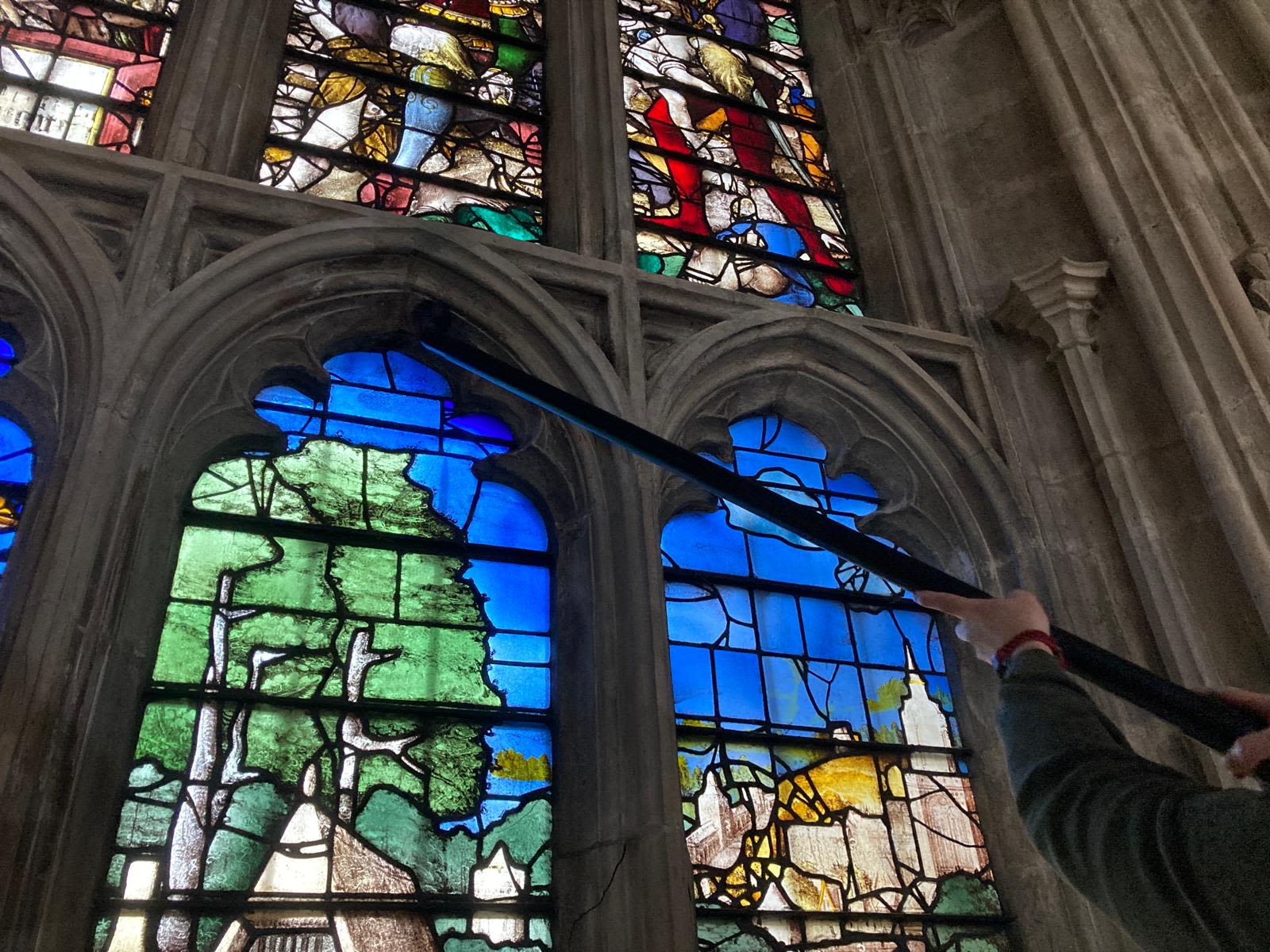
A significant part of the Chapel's historic woodwork in the choir stalls has undergone restoration alongside the removal of dust in hard to reach areas.
Caroe Architects, working with Cliveden Conservation carried out a major clean of masonry and stained glass windows in January, while Bainbridge Conservation undertook 6 weeks of work on the wooden panels behind the stalls, which were carved in the 17th century.
Watch the Dean of Chapel Reverend Dr Stephen Cherry talk about the work and its impact on the Chapel.
Dean of King's College Chapel Stephen Cherry
Dean of King's College Chapel Stephen Cherry
Aerial view of Chapel cleaning
Aerial view of Chapel cleaning
Cleaning from within the organ loft
Cleaning from within the organ loft
A telescopic cherry picker holds cleaners at work near the Chapel ceiling
A telescopic cherry picker holds cleaners at work near the Chapel ceiling
Removing dust from around the Chapel
If left unmanaged, dust is not only an aesthetic concern but a real risk to historic interiors.
What's so harmful about dust?
A significant amount of the ‘dust’ within a building comes in through natural ventilation and air exchange with the external environment, with a similar high proportion being carried in on people. The particles include both organic and inorganic material that tends to accumulate more on surfaces in high-traffic areas.
"People don't often think about dust as a risk to cultural heritage as much other environmental factors like humidity, temperature, light and gaseous pollutants" commented Gethin Harvey at Caroe Architects. "But evaluations undertaken for historic monuments and houses in the UK and in France rank dust as the second highest cause of deterioration."
Dust not only dulls the appearance of decorative surfaces but can also promote micro-scratches, generate destructive chemical reactions, and create an environment where, coupled with humidity and temperature, biological activity and corrosion can have negative impacts. Reduction and control of dust is therefore a key issue in protecting the precious fabric of the Chapel and one we take very seriously.
Recent activities have included a high-level deep clean to reduce the overall dust load. Due to access constraints this is a logistical challenge that, fortunately, is not required as often as the cleaning of low-level surfaces.
How we cleaned a Chapel from top to bottom
The clean required the construction of temporary scaffold ramps to bring a cherry picker into the Chapel, and extremely careful manoeuvring within to ensure nothing was damaged. Weight limitations around the crypt (that extends close to both the north and south doors) governed the size of machine that could be safely brought into the Chapel meaning that a specialist team of conservators then worked carefully with extended hoovers to reach the even the highest points.
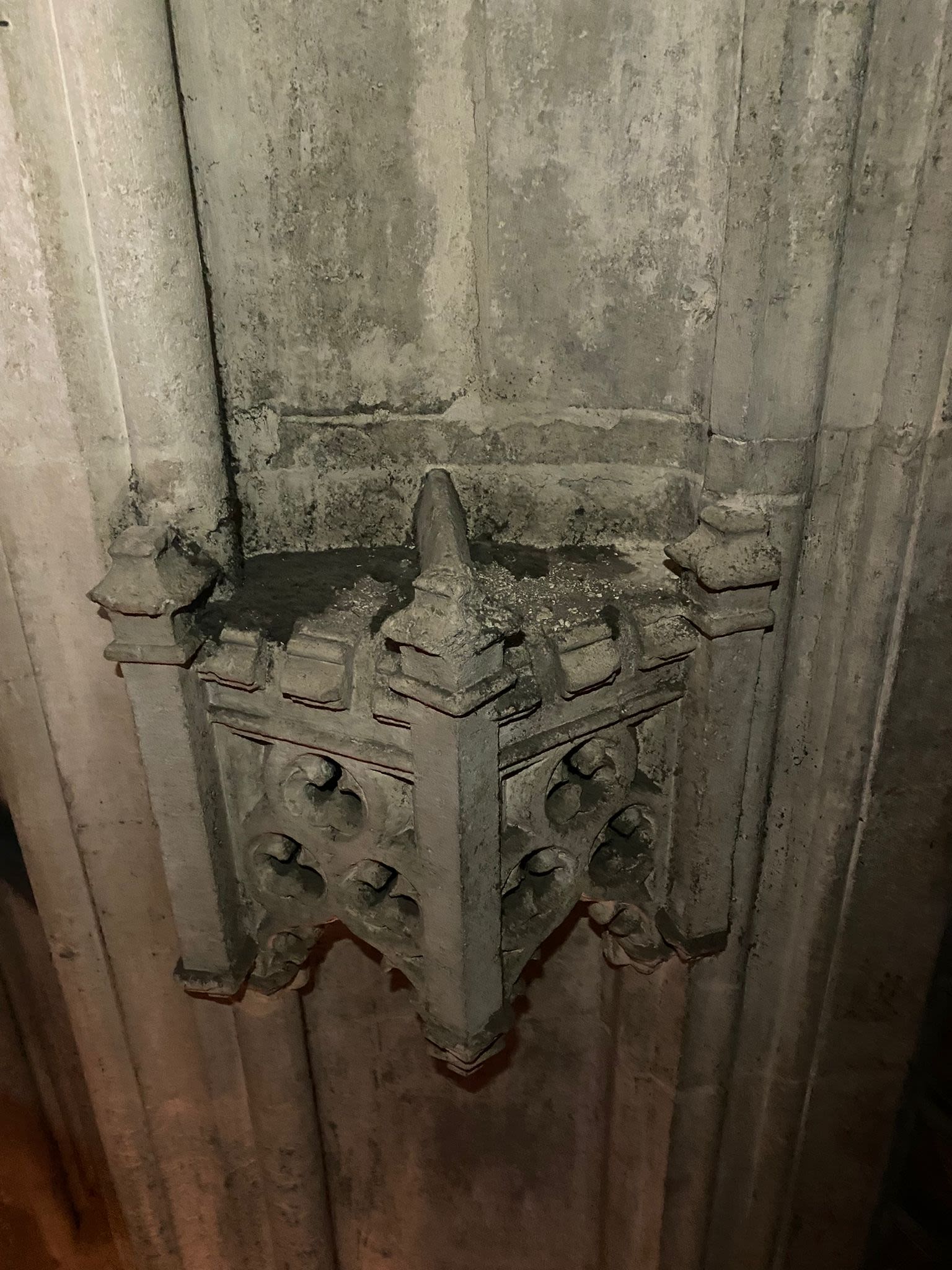
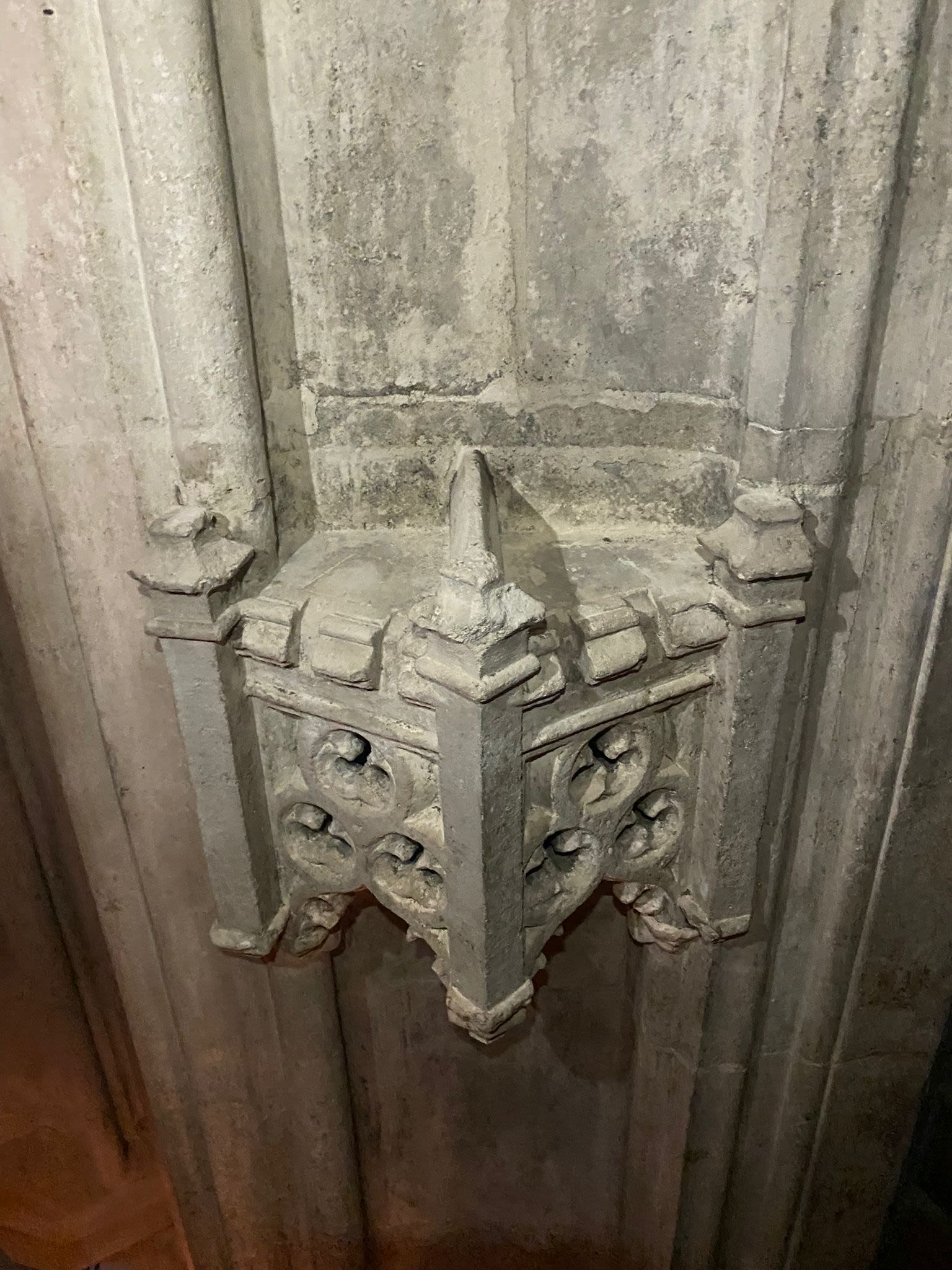
A close up of stonework before cleaning
And afterwards
The wall behind the stalls became temporarily visible during the restoration work
The wall behind the stalls became temporarily visible during the restoration work
The back of one of the panels removed for conservation
The back of one of the panels removed for conservation
A conservator inspects a panel
A conservator inspects a panel
Repairing and restoring woodwork from the 17th century
Following from trials and urgent conservation work undertaken in 2023 we are embarking on an ambitious programme to treat the woodwork of the Chapel.
A major conservation programme
This multi-year project is the most extensive conservation to the internationally significant woodwork of the quire in the last 75 years. Damage has occurred from constant use over the centuries and historic woodworm infestation has caused the timber in some areas to become weak and crumbly.
Old repairs are now failing and some of the panels are at risk of splitting or carved elements detaching. The surfaces have embedded dust in hard-to-reach areas and have old wax residues that require a specialist clean. Obvious losses of the carving (including 2 unicorn horns and 10 small crosses from lion’s crowns) are being replaced with new carving.
Recent work
For this phase of work our focus is on the carved armorial panels that make up a screen at the back of the stalls.
"These beautiful panels were commissioned and given by Thomas Weaver, a Fellow of King's" noted the Dean of Chapel. "They were carved by a man called William Fells and records show that he visited the Chapel in 1629. The panels were installed in 1633."
They are made from elm, which is unusual: the rest of the choir is made from oak which was the more commonly used wood for interior joinery. However, Fells seems to have access to a plentiful supply of elm trees for this purpose.
Each panel is made from only two boards: a wide one making up around 2/3rds the width and a narrower one. The board would have been carved solid - rather than having the carving applied. This would have meant that very thick boards were cut from the tree trunk.
Conservators at work
The panels depict the coats of arms of different British monarchs, identified by the different supporters which are carved in exuberant detail.
There are also arms of the university, King’s and Eton, supported by winged angels.
All the panels were at some point cut from their frames, presumably to access them for restoration. However, when they were re-installed, there was no new method of fixing them in the frames, so they move freely and are at risk of further damage.
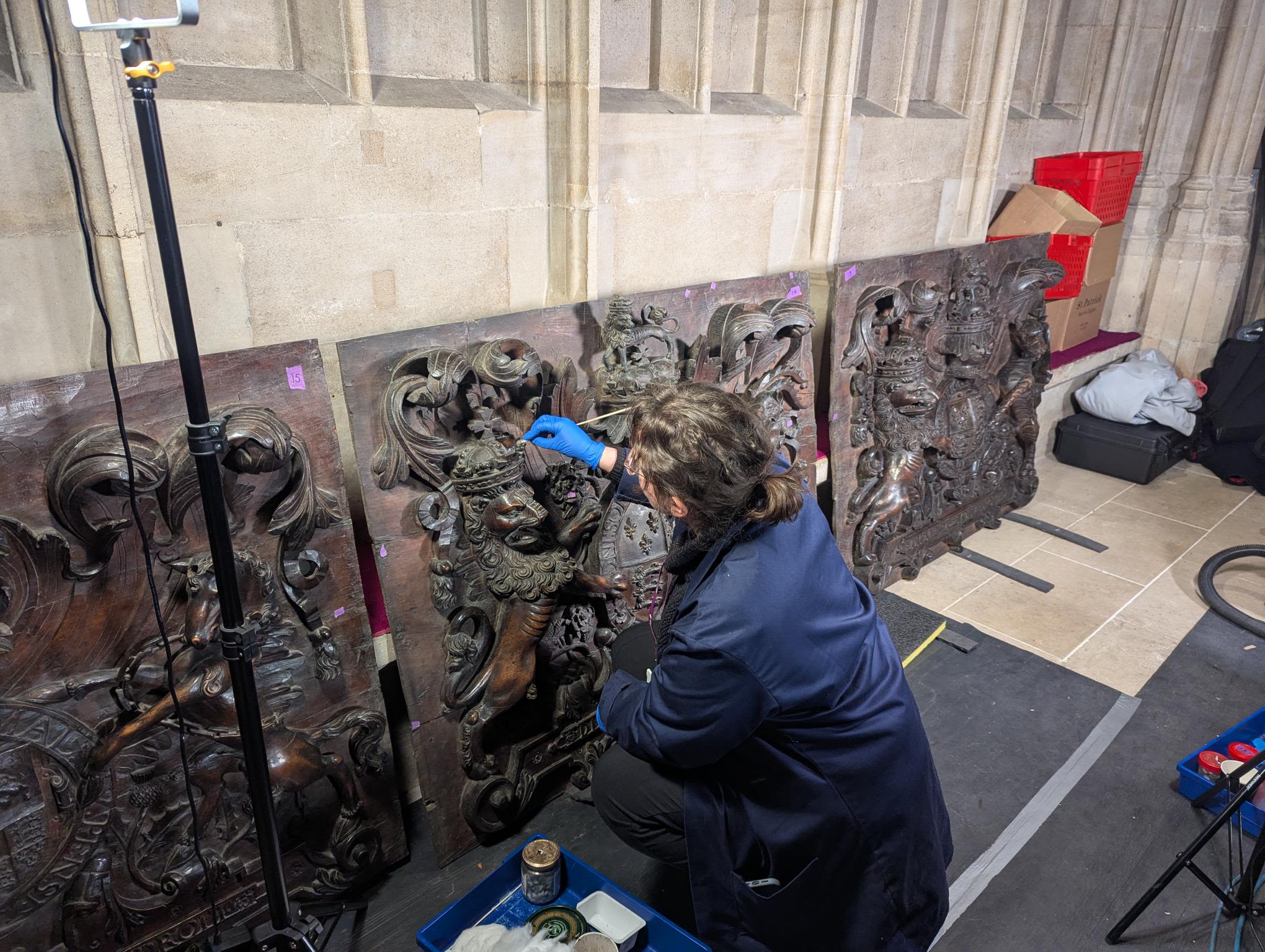
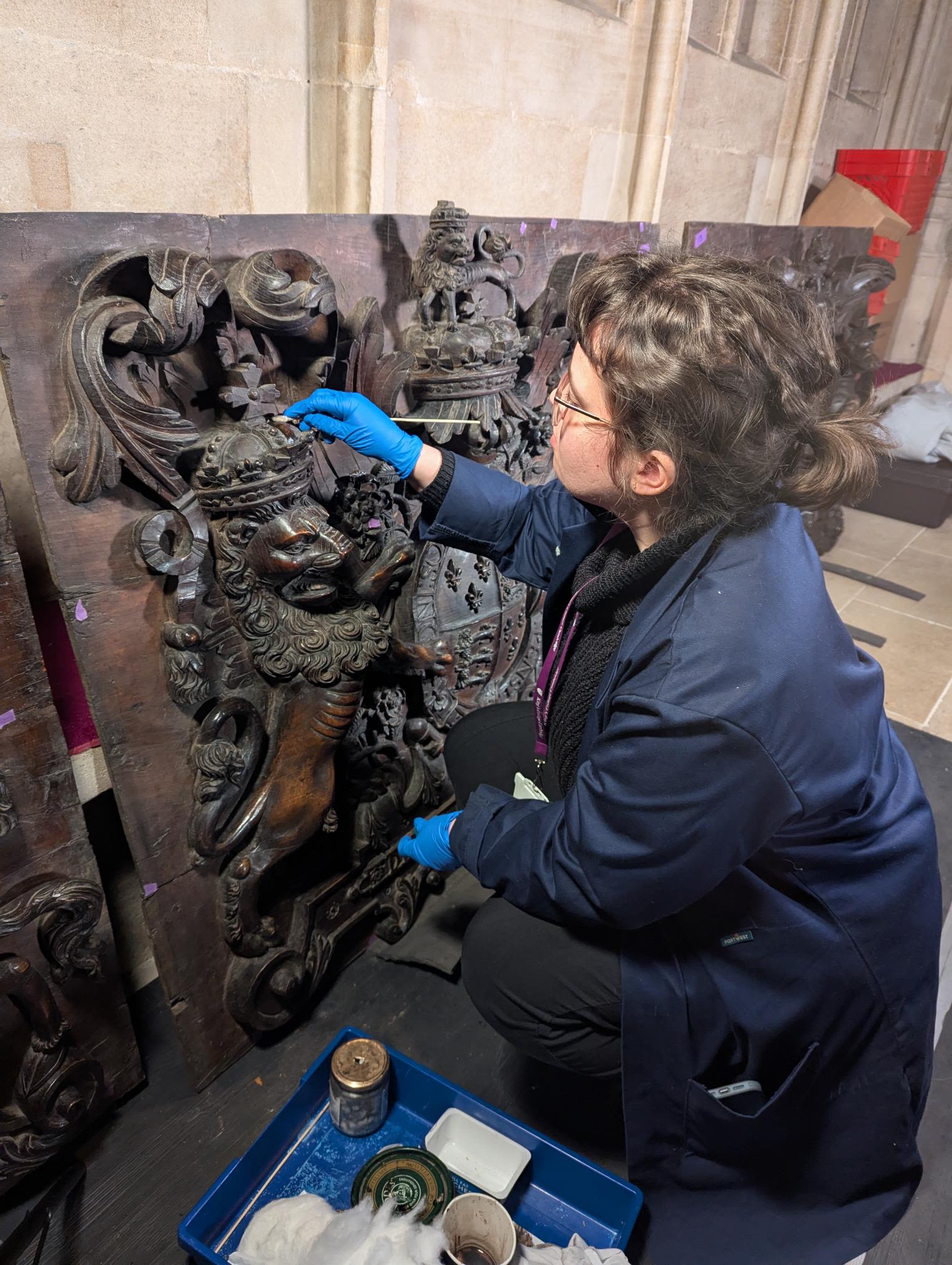
Woodwork up close
To ensure the stability of the restored panels in the long term and to make them secure they will be held in face by new but quite invisible fixings.
One of the problems that our work has been addressing is the discoloration caused by the ageing of wax and the accumulation of dust on the surface of the panels. Although the visual change is subtle, the beauty of the panels is now far more evident.
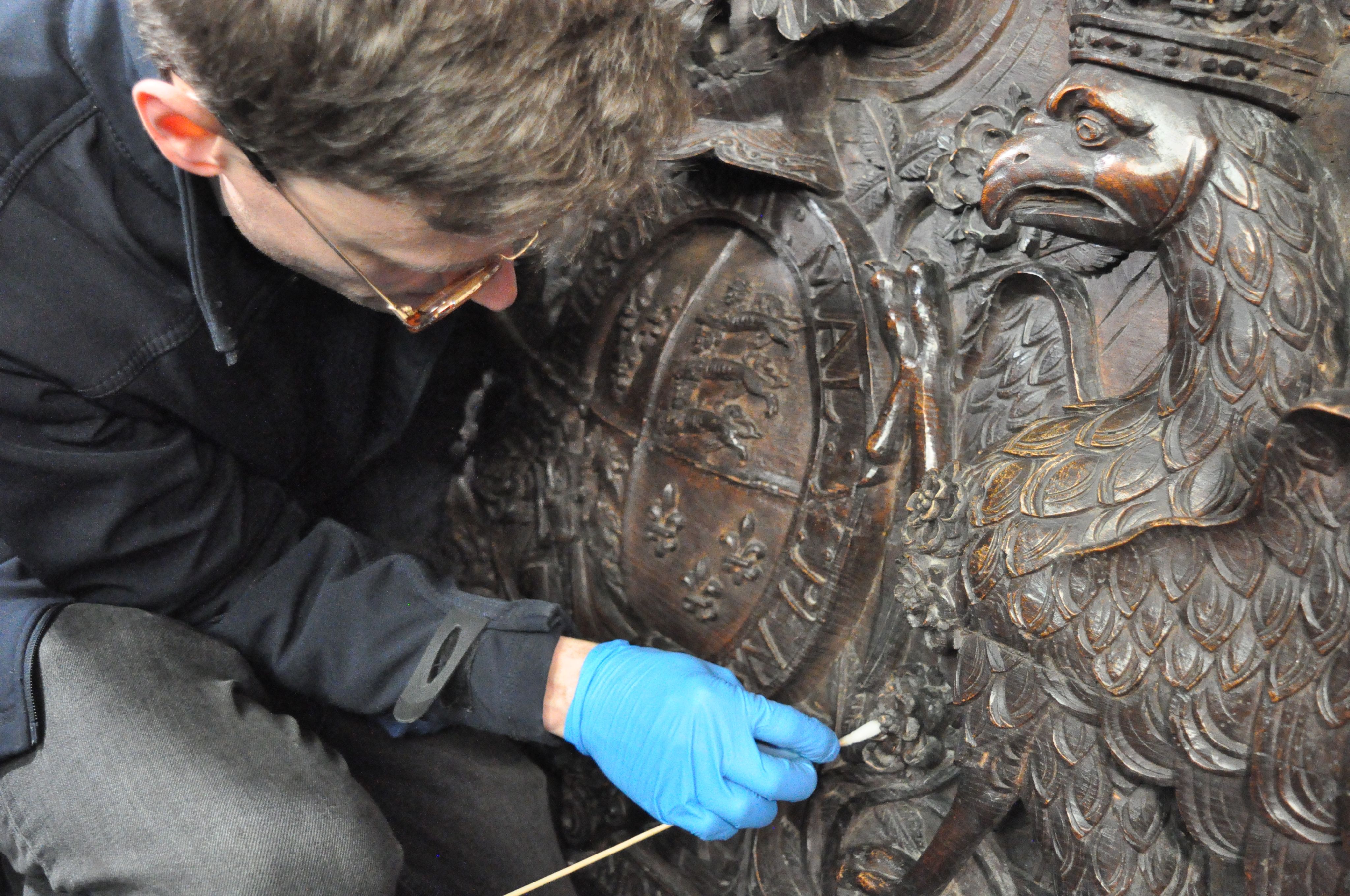
With thanks to the conservation partners who carried out this vital work, and to the Chapel donors who have generously funded it.
To learn more about ensuring the Chapel's future, please visit: https://www.kings.cam.ac.uk/chapel






